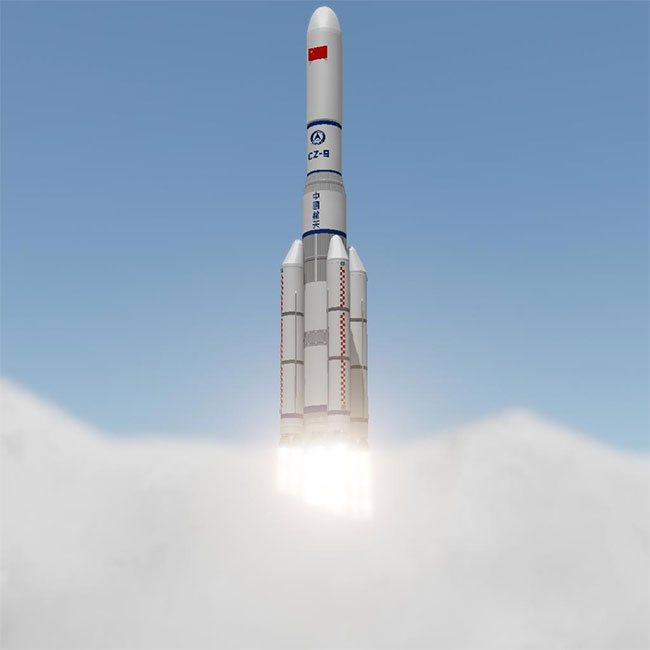At the ongoing Zhuhai Airshow, China unveiled the new design of its super rocket, the Long March 9, featuring grid fins and no side boosters. This design is reminiscent of SpaceX’s reusable spacecraft.
In an interview with China Central Television, Liu Bing, the design director at the China Academy of Launch Vehicle Technology (CALT), confirmed the new direction for the Long March 9 but noted that the design is still not finalized, according to SpaceNews.

China is currently looking to develop a rocket more similar to SpaceX’s.
This development has drawn the attention of billionaire Elon Musk, who has been at the forefront of reusable rocket technology and has demonstrated its viability. “Rockets that are not reusable have no future,” tweeted the CEO of SpaceX in response to a SpaceNews article.
According to SpaceNews, China initially aimed to mimic NASA’s Space Launch System (SLS) super rocket, but they are now looking to create a rocket more akin to SpaceX’s designs.
The new plan for the Long March 9 rocket outlines a three-stage rocket that stands 108 meters tall, has a diameter of 10 meters, and weighs 4,180 tons.
This rocket is capable of delivering 150 tons of payload to low Earth orbit (LEO), 50 tons to lunar orbit, and 35 tons to Martian orbit. The rocket is expected to be ready for its test flight around 2030.
Meanwhile, NASA’s SLS, which stands 98 meters tall and is paired with the Orion spacecraft, has cost over $50 billion to develop. Moreover, each launch of the Artemis rocket is projected to cost up to $4.1 billion—a price that U.S. Inspector General Paul Martin described as “unimaginable” during a House subcommittee hearing on space and aeronautics on March 1.
As of now, the SLS rocket has yet to leave the launch pad and is already considered outdated.
However, Gizmodo also notes that NASA decided to use a super heavy, single-use rocket 12 years ago, a choice heavily influenced by political factors and budget constraints. At that time, it was generally believed that rockets could not be reused in a feasible and safe manner.
For the SLS, only time will tell whether this expensive rocket has a future.
U.S. Congress and taxpayers may be growing weary of this concept. Instead, they seem to prefer the solution proposed by billionaire Elon Musk.


















































